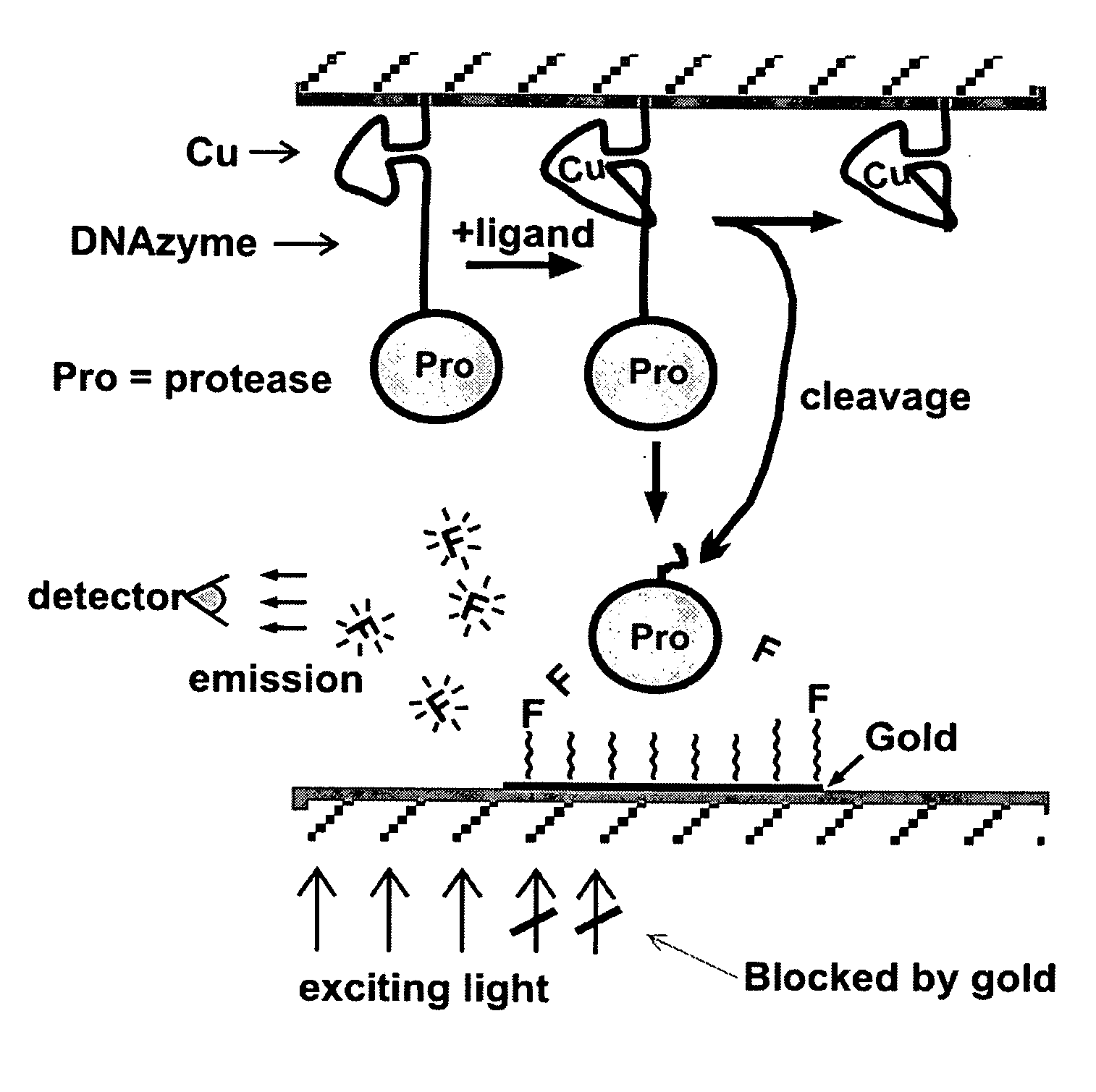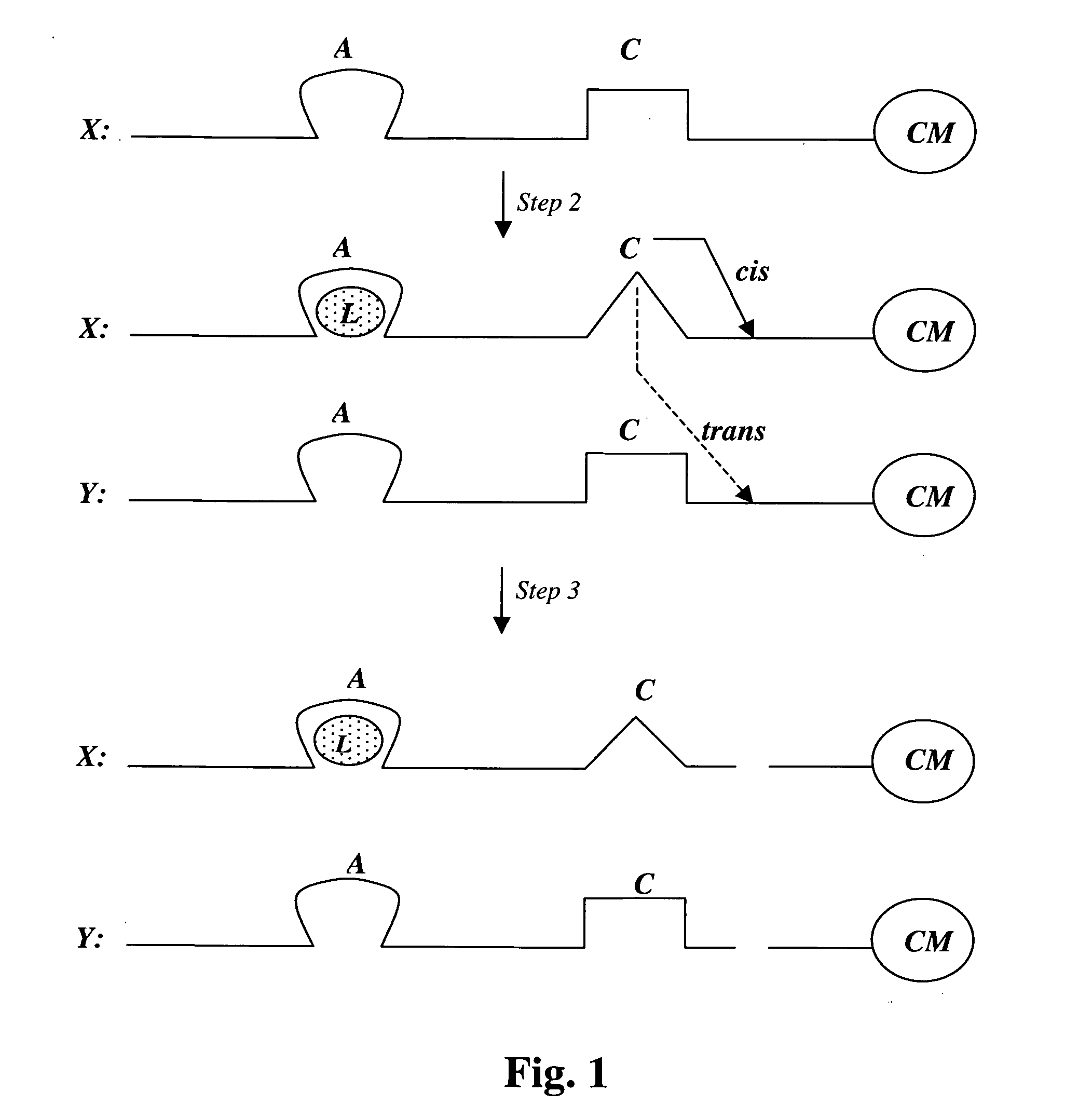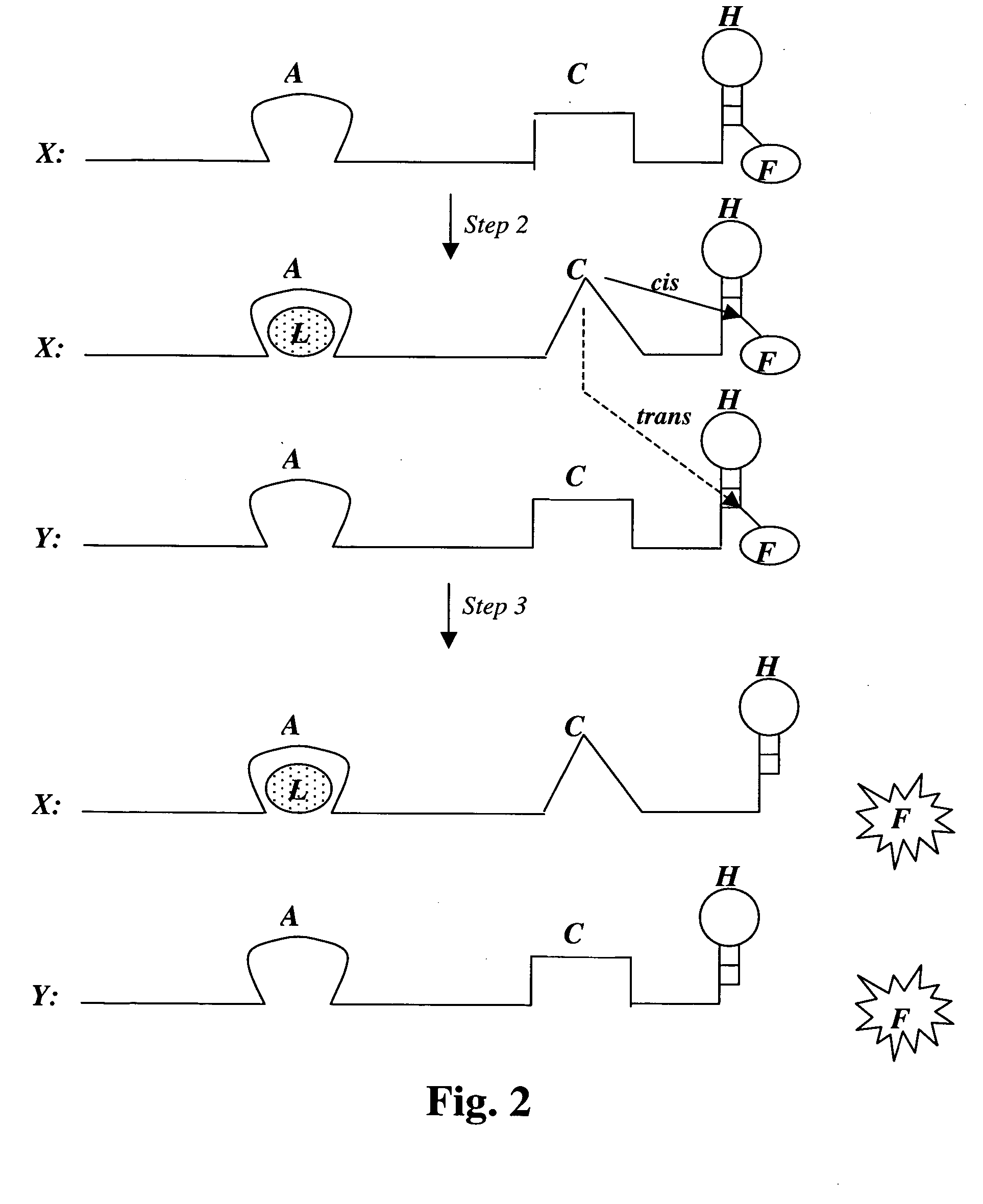Nucleic acid aptamer-based compositions and methods
a technology of nucleic acid aptamer and composition, applied in the direction of dna/rna fragmentation, peptide/protein ingredient, depsipeptide, etc., can solve the problems of not solving the problem of providing an amplified response and the response is often too weak for practical applications
- Summary
- Abstract
- Description
- Claims
- Application Information
AI Technical Summary
Benefits of technology
Problems solved by technology
Method used
Image
Examples
example 1
Detection of Ligand-Aptamer Interactions Using a Carbon Nanotube
[0128] The commercial protease subtilisin can be used as a cargo molecule attached to a nucleic acid. Subtilisin has great stability, broad substrate specificity, and high activity (kcat of ˜>100 per second on many substrates (Zhao, H. & Arnold, F. H., Protein. Eng., 1999, 12:47-53; Stambolieva, N. A. et al., 1992, Arch. Biochem. Biophys., 294:703-706)). The peptide N-acetyl-glu-glu-ala-glu-glu-ala-glu-glu-ala-ala-pro-phe-AHA6-pyrene (SEQ ID NO: 1) is a substrate cleaved by subtilisin and can be used to coat the carbon nanotube. The peptide should adhere strongly to the carbon nanotube via the pyrene group on its carboxyl end (Petrov, P. et al., 2003, Chem. Commun. (Camb.), 2904-2905). The six glutamate residues should impart a strong negative charge to the carbon nanotube. Upon ligand binding to the aptamer, the cargo molecule subtilisin will cleave the peptide after the phe residue. The freed peptide will leave the p...
example 2
Isolation of an Allosteric DNA Molecule that Responds to Glucose
[0131] A population of random DNA sequences can be provided and a subset selected that is able to bind glucose. However, in this case, a DNA aptamer that binds the glucose disaccharide cellobiose (glucose-beta-glucose) has already been described (Yang, Q., et al., Proc. Natl. Acad. Sci. USA, 1998, 95(10): 5462-5467). This aptamer was isolated on the basis of its ability to bind to a column of cellulose, which is polymerized cellobiose; cellulose can also be viewed as polymerized glucose. This aptamer binds cellobiose tightly but not other glucose derivatives. The cellobiose aptamer can be used as starting material for the generation of a large number of genetic variants of this sequence by having a population of molecules synthesized with only 70% fidelity (doped synthesis); i.e., there is a 30% chance of having any one of the 3 alternative DNA bases at each position. The entire molecule is 89 nucleotides (nt) in lengt...
example 3
Isolation of an Allosteric Nucleic Acid that Cleaves in the Presence of Glucose
[0135] A new stretch of 40 random nucleotides is synthesized adjacent and upstream of the glucose aptamer described in Example 2 (i.e., on its 5′ side). From this population, molecules are selected with DNase activity, i.e., molecules that are able to cleave single stranded DNA in cis or trans. Such cleaving DNAzymes have been isolated in two different laboratories in the past (Carmi, N. and R. R. Breaker, Bioorg. Med. Chem., 2001, 9(10): 2589-2600; Sheppard, T. L. et al., Proc. Natl. Acad. Sci. USA, 2000, 97(14): 7802-7807). Since such DNAzymes can be self-destructive, (i.e., self-cleavage or cis cleavage), their activity must be modulatable to allow their isolation, i.e., they must be first isolated in their inactive state. Such modulation is in fact what is desired for selection: the DNAzyme should be inhibited by the (empty) glucose aptamer domain in the absence of glucose. On the other hand, it shou...
PUM
| Property | Measurement | Unit |
|---|---|---|
| Color | aaaaa | aaaaa |
| Current | aaaaa | aaaaa |
| Metallic bond | aaaaa | aaaaa |
Abstract
Description
Claims
Application Information
 Login to View More
Login to View More - R&D
- Intellectual Property
- Life Sciences
- Materials
- Tech Scout
- Unparalleled Data Quality
- Higher Quality Content
- 60% Fewer Hallucinations
Browse by: Latest US Patents, China's latest patents, Technical Efficacy Thesaurus, Application Domain, Technology Topic, Popular Technical Reports.
© 2025 PatSnap. All rights reserved.Legal|Privacy policy|Modern Slavery Act Transparency Statement|Sitemap|About US| Contact US: help@patsnap.com



